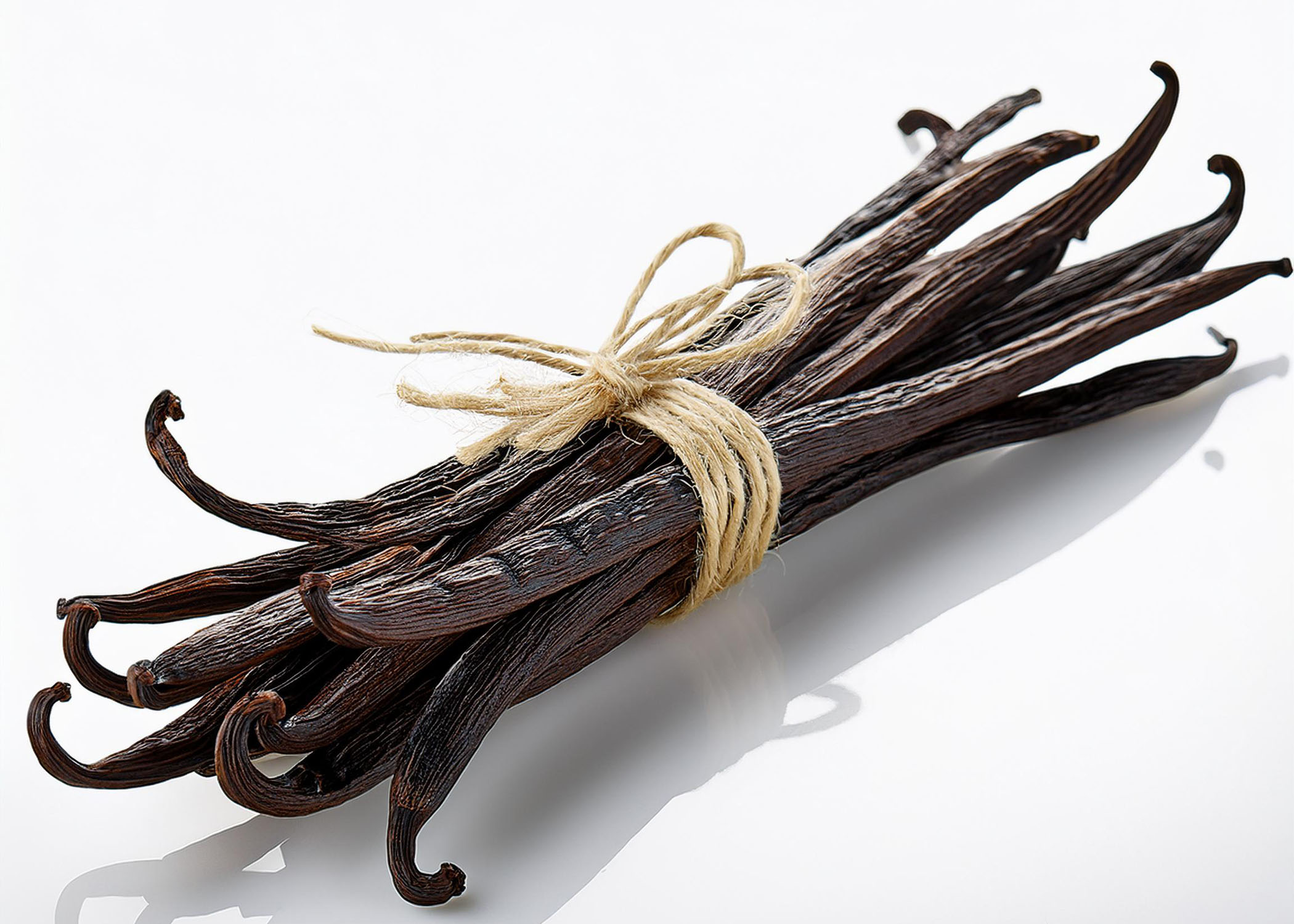Botanical Name: Vanilla planifolia
Madagascar vanilla beans, often called the “gold standard” of vanilla, are prized worldwide for their rich, creamy flavor and intoxicating aroma. Grown primarily on the island of Madagascar, part of the Indian Ocean’s Bourbon Islands, these beans come from the Vanilla planifolia orchid and are known for their superior quality, making them the most sought-after vanilla beans globally.
Madagascar vanilla beans have a sweet, creamy, and slightly floral flavor with subtle hints of caramel. This profile makes them ideal for both sweet and savory dishes, providing a depth of flavor that enhances everything from desserts to sauces and beverages. The beans are long, slender, and filled with tiny, flavorful black seeds that are often scraped out and used in recipes to give dishes those signature vanilla flecks that signal quality.
One of the reasons Madagascar vanilla beans are so revered is the meticulous and labor-intensive process required to grow and cure them. Vanilla orchids are hand-pollinated, and the beans themselves take several months to mature. After harvesting, the beans undergo a curing process that can last up to six months, during which they develop their complex flavor and aroma. This laborious process, combined with the region’s perfect growing conditions—characterized by a warm, humid climate and rich soil—results in the beans’ unparalleled quality.
In the kitchen, Madagascar vanilla beans are incredibly versatile. They’re most commonly used in baking, where they enhance cakes, cookies, custards, ice creams, and other confections with a rich, smooth vanilla flavor. The scraped seeds can be incorporated into batters, doughs, and fillings, or the entire pod can be simmered in milk, cream, or sugar syrups to infuse the liquid with a deep vanilla essence. The spent pods can even be placed in sugar jars to create homemade vanilla sugar.
Beyond sweet dishes, Madagascar vanilla is also used to add complexity to savory recipes. Its floral sweetness pairs well with seafood, poultry, and even root vegetables, creating a unique, aromatic contrast. It can be used in marinades, sauces, or glazes, offering a sophisticated depth of flavor.
Madagascar vanilla beans are also cherished for their use in crafting high-quality vanilla extract, which is a staple in home and professional kitchens around the world.

